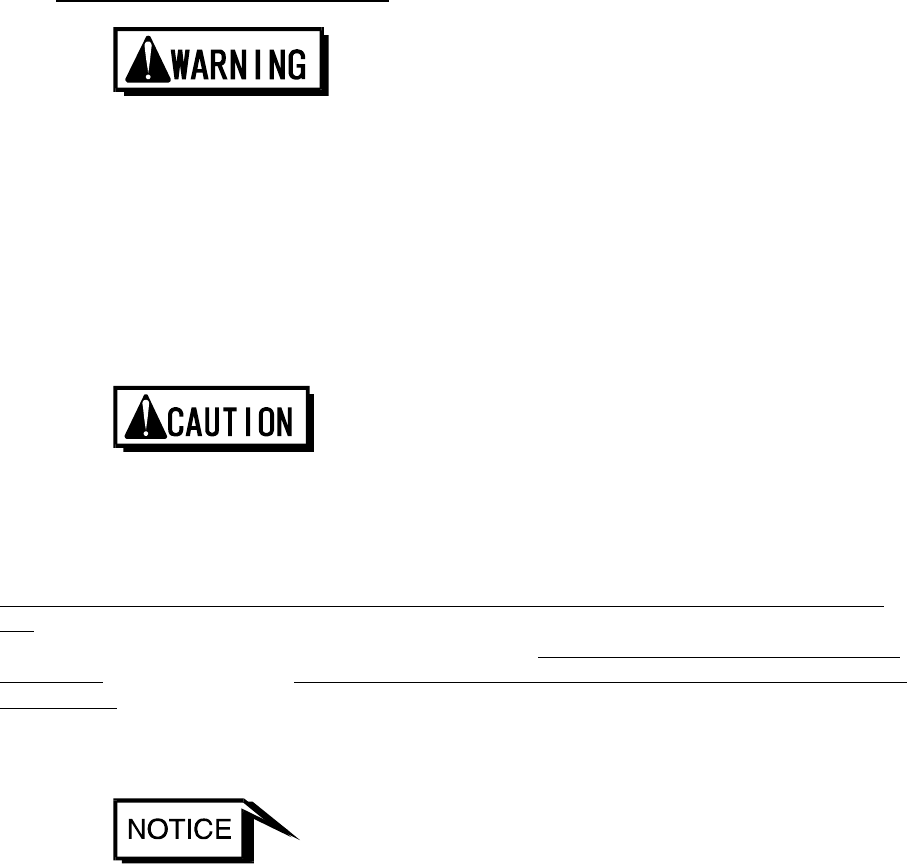
STP-H600/H1000 Series Instruction Manual
12.6 Transporting for Repair or Overhaul
When removing the STP pump from the vacuum equipment, exhaust gases
inside the STP pump thoroughly.
Residual gases may result in an accident when removing the STP pump.
Confirm the characteristics of gas to be used, referring to the Material Safety
Data Sheet (MSDS) you obtain from the gas supplier.
When returning the STP pump which has used corrosive, reactive or
inflammable gases to Seiko Instruments, specify the type of gas and handling
precautions on the surface of the package.
Confirm the characteristics of gas to be used, referring to the Material Safety
Data Sheet (MSDS) you obtain from the gas supplier.
When returning the STP pump to Seiko Instruments, be sure to pack it well to
prevent external damage.
If any of the specifications has not been satisfied, Seiko Instruments will not be
responsible for any damage during transport.
i) Always contact Seiko Instruments before returning the STP pump for repairs, overhaul,
etc. To avoid any accident by gases or corrosion inside the STP pump, particularly when
corrosive, reactive or flammable gases have been used, ii) vacuum and hermetically seal the
STP pump before transport. iii) Specify the type of gases used and handling precautions on
the package and return the STP pump to Seiko Instruments.
When returning the STP pump to Seiko Instruments, be sure to pack it well to prevent
external damage. Use similar or superior packaging material as originally supplied by
Seiko Instruments.
The costs of cleaning and overhaul of the STP pump will be at your own charge.
When returning the STP pump to Seiko Instruments, fill in the necessary items
in the "STP PUMP PROBLEM CHECK SHEET" and fax it to Seiko Instruments.
12-5


















